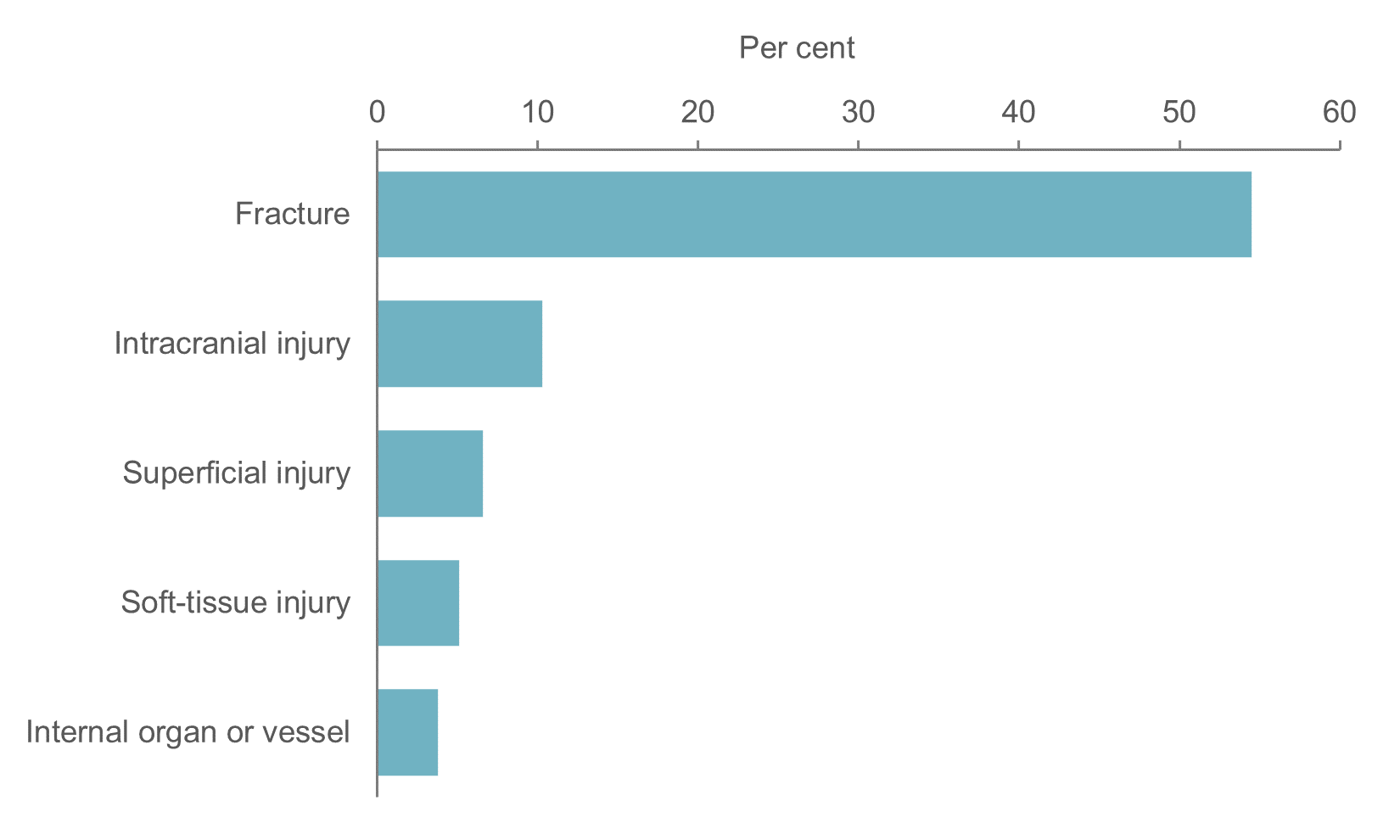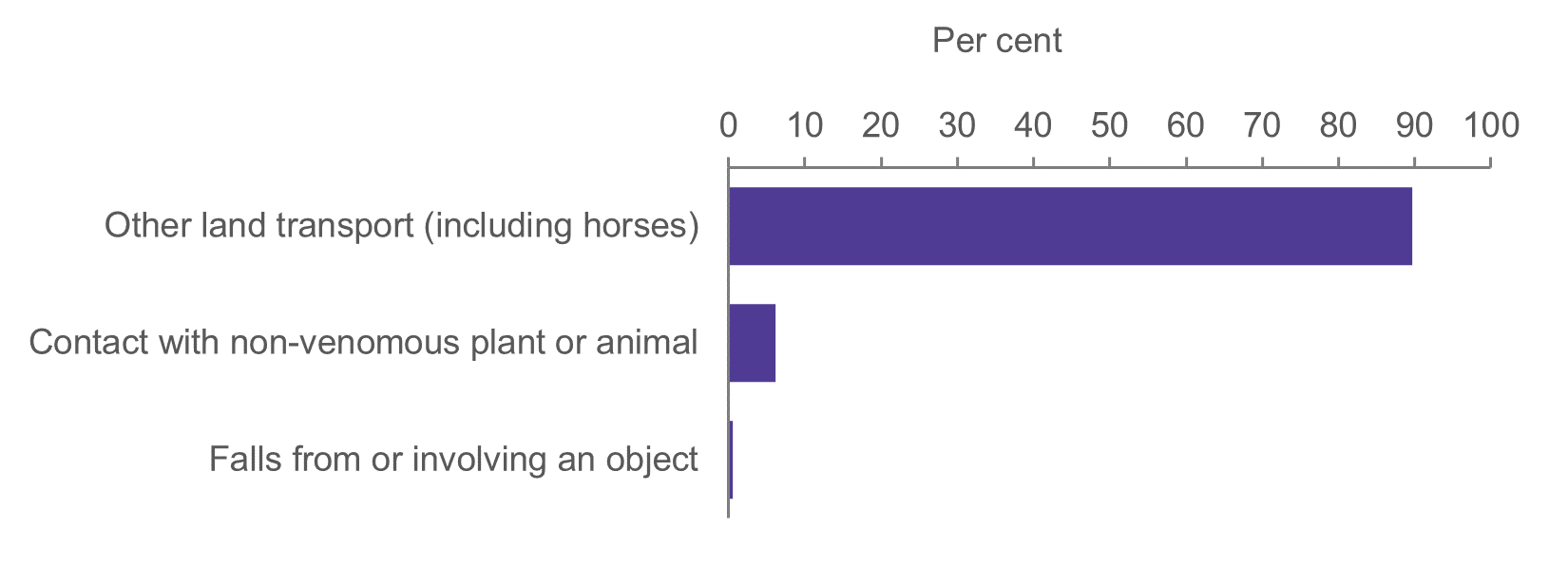Equestrian activities

An estimated 269,000 Australians aged 15 and over participated in equestrian activity in 2021–22 (ASC, 2022). Around 2,200 injury hospitalisations were attributed to equestrian activities – 1,700 females and 500 males. This was a similar number to the previous year.
The age-standardised rate of equestrian injury hospitalisations for males plateaued in 2021–22, while for females it dropped by 16% between 2020–21 and 2021–22 (Figure 1).
Figure 1: Trend in injury hospitalisations from equestrian activities, by sex, 2012–13 to 2021–22
Line chart shows upward trend of hospitalisations from 2012–13 to 2015–16 and declining in 2021–22.
For more detail, see data tables B1–2.
The highest number of hospitalisations was in the 15–19 age group (Figure 2).
Figure 2: Age distribution of injury hospitalisations from equestrian activities, 2020–21

Source: AIHW NHMD.
For more detail, see data table A14.
About half of these hospitalisations were fractures (55%) (Figure 3).
Figure 3: Top 5 injury hospitalisations from equestrian activities, by type of injury as a proportion, 2021–22

Note: Type of injury is derived from the principal diagnosis.
Source: AIHW NHMD.
For more detail, see data table A25.
There were 185 hospitalisations for concussion – 155 females and 31 males.
The main injury was to the trunk of the body in a third of cases (33%), and the head and neck in almost a quarter of cases (23%) (Figure 4).
Figure 4: Injury hospitalisations from equestrian activities, by body part injured, as a proportion, 2021–22
Diagram of human body shows percentage of body parts injured in hospitalisations in 2021–22. Ankle and feet contributed the least at 2% of cases.

'Notes
1. Body part injured is derived from the principal diagnosis.
2. ‘Trunk’ includes thorax, abdomen, lower back, lumbar spine & pelvis.
Source: AIHW NHMD.
For more detail, see data table A26.
Perhaps unremarkably, about 9 in 10 of these hospitalisations were reported to have been caused directly by an accident with a horse, such as a fall from a horse (Figure 5).
Figure 5: Cause of injury as a proportion when specified, hospitalisations from equestrian activities, 2021–22

Source: AIHW NHMD.
For more detail, see data table A27.
Australian Sports Commission (ASC) (2022) AusPlay, ASC, Australian Government, accessed 8 January 2024.


